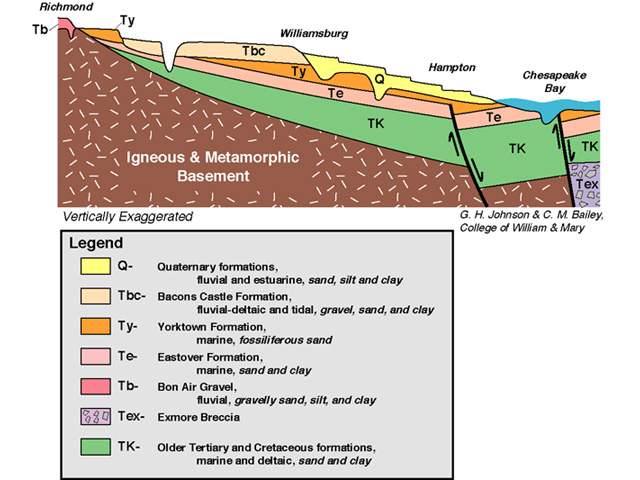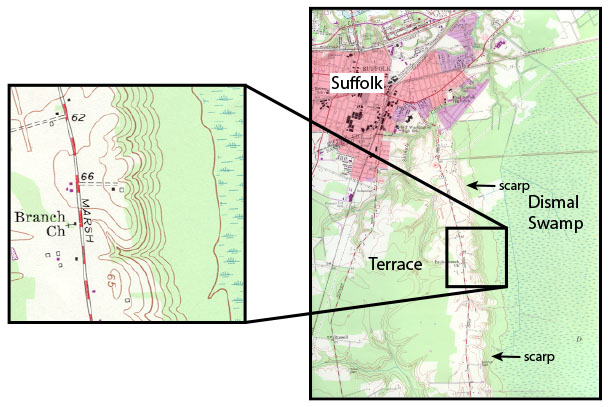
Special Physiographic Features, Part 2
Scarps and Terraces
• The topography of the Coastal Plain is a series of wide, shallow steps that drop down toward the coast and the major rivers.

Diagram showing the geology of scarps and terraces, the stair-stepped topographical features of the Coastal Plain. (Image from College of William & Mary geology website, courtesy of C. M. Bailey)
• Scarps are low, steeper, cliff-like features where elevation changes quickly.
• Terraces are the flatter plains between scarps.
• High, older terraces in the western part of the Coastal Plain are more dissected by stream erosion than the lower, younger terraces to the east.
• Scarps and terraces record changes in sea level over the last few million years. Shorelines have transgressed and regressed due to melting and growth of glaciers and as the Coastal Plain slowly uplifted.
• Scarps are eroded features cut by waves along a shoreline.
• Terraces are depositional surfaces formed on old marine or river sediments.

Topographic map of Suffolk Scarp. Note the presence of the Great Dismal Swamp on the terrace east (right) of the scarp. (Images from United States Geological Survey Suffolk Quadrangle Map)